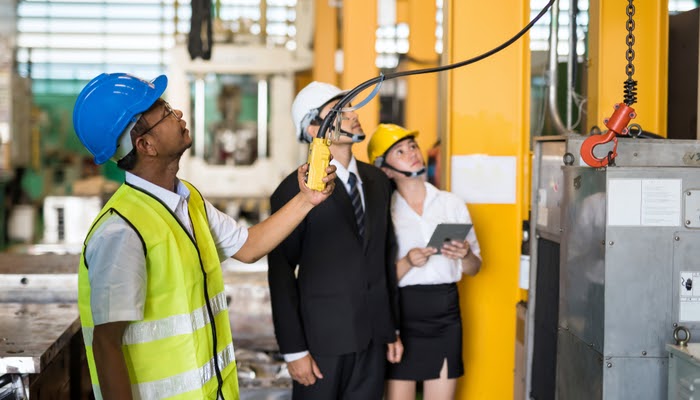Over time, your facility (or facilities) will change. Nothing is made to last forever, particularly not buildings and working equipment. The purpose of routine facility audits is to perform a comprehensive review of all assets in a facility. They aim to provide you with information about all the policies, procedures, and components of a facility, regardless of whether it is new or has been in operation for a while.
Facility audits take time and effort. It is much too easy to overlook something that may prove significant later on. To guide your way through an audit, here are ten questions that must be answered during the process.
- What is the layout of your facilities?
- Are your ladders in good condition?
- How about your forklifts?
- Have you recently tested alarms?
- Where are your eyewash stations and fire extinguishers?
- What are the conditions of walking and working surfaces?
- Does anything require maintenance?
- Are employees trained to use their tools, and are they using them safely?
- How are employees performing their jobs?
- Do employees have feedback on how to improve the EHS program?
Knowing your facilities' size and layout will help determine how long the audit will take and all the different areas that need to be assessed.
In Canada, it is estimated that over 40,000 workers get injured every year due to ladder accidents. The leading cause of 10% of those accidents are ladders in poor working conditions. These numbers are reason enough to emphasize ladder assessment in your audit.
Like ladders in poor condition, forklifts that haven't been properly maintained can cause severe injury and even death. Forklift operators have to be adequately trained, and all of your forklifts need to be in peak working condition at all times.
Fire alarms and any other visual or audible danger signals you may have in your facility must be operating without a hitch. In case of a fire or an accident such as a dangerous gas or chemical getting in the eyes of your workers, they need to know exactly where they can go for immediate help.
Minimize slips, falls, and similar injuries by assessing the conditions of all surfaces in your facility. If the audit yields a potential hazard, there should be no hesitation in mitigating it right away. Employers are obligated to provide their personnel with all the required health and safety training, including handling of the equipment and tools they're working with.
One distracted, reckless, or careless employee may cause a grave workplace incident. Make sure everyone in your facility understands the importance of health, safety, and efficiency.
The Environment, Health, and Safety program has to include all the employees in your facility. If there are any changes to be made, each employee must be informed of their role and how they can contribute.
Takeaway
At the end of a facility audit, you must have a clear picture of your facilities' condition as a whole, building, equipment, and all. Even though there is a lot to keep track of, audit software can go a long way in making the process less stressful and more efficient.
Please take a look at our The Checker Pro software solution that allows you to tailor facility audit checklists to the needs of your business.











